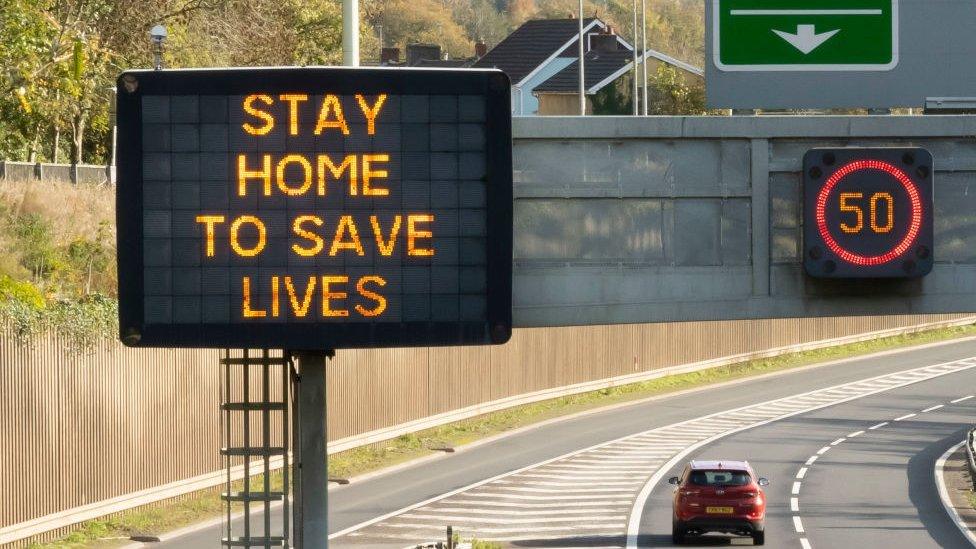Covid: Wales' restrictions led to fewer infections than England
- Published
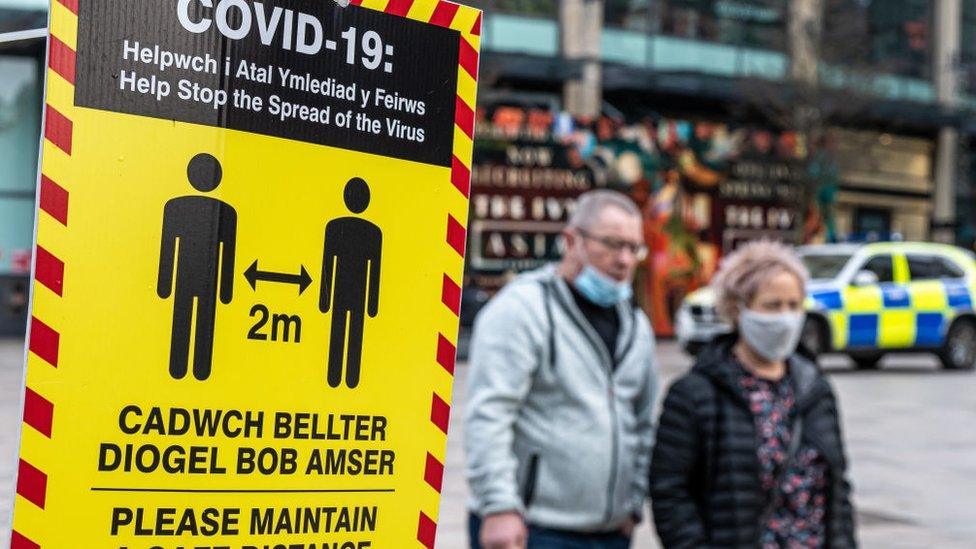
Scientists have found Wales' Covid restrictions led to proportionally less infections than in England
Fewer people in Wales were infected with Covid during the pandemic compared to England, according to new analysis.
Scientists advising the Welsh government estimate that 57% of the Welsh population was affected, compared to 71% over the border.
They said this indicated the different approach to restrictions in Wales had reduced the number of infections.
The report said this correlated with the finding that excess deaths were around 20% lower in Wales than England.
However, the report does not look at the indirect harms of restrictions, such as the impact on the economy or education.
Reacting to the report, Welsh Conservatives said: "Reducing hospitalisations and deaths were the priority during the pandemic, and yet Wales came out with the highest Covid death rate in the UK. Shockingly, a quarter of the deaths in Wales came from hospital acquired infections."
Using Office For National Statistics (ONS) data, the report highlights three periods between April 2020 and February 2022 where the Welsh response to the pandemic varied from England.
The report does note that Covid hospital admissions in Wales were higher than across the border for most of the period.
It said this was to be expected due to Wales having an older, more deprived and hence more vulnerable population.
The report also credits higher vaccination take up and the number of people living in rural areas as factors.
The report notes that restriction in Wales were not always more stringent than in England.

However, comparisons were not made with Scotland and Northern Ireland due to "smaller sample sizes" and data being "unavailable" until later in the pandemic.
What was different in Wales?
The report examined three periods between April 2020 and February 2022 where the Welsh response to the pandemic was different to restrictions in England.
Autumn 2020
Wales imposed a two week firebreak at the end of October to deal with the number of new cases - which had been increasing exponentially since July.
England's approach was to impose a four-week lockdown at the start of November, almost two weeks later, once the numbers were higher.
In both instances, the number of new cases fell as a result of the increased restrictions, but the report says that the proportion testing positive during this period in Wales was 2.34% of the population, lower than in England which stood at 3.05%.
Summer 2021
Wales introduced Alert Level 4 restrictions - the highest level meaning "very high risk" - at the end of 2020, before gradually easing restrictions in the spring with the proportion of infections close to zero for several months.
Despite moving to Alert Level 1, meaning low risk, in July just as the Delta variant was starting to dominate, Wales did not come out of lockdown until the start of August - a month after England.
During that month, 1.33% of the population was estimated to have tested positive for Covid in Wales, compared with 4.18% of the population in England.
The report - by the scientists advising the Welsh government, the Technical Advisory Committee (TAC) - says this indicates that Wales' approach of easing restrictions later and more slowly led to fewer people testing positive.
It also said that at the peak of the Delta wave in October, this led to fewer people testing positive in Wales (19.61 per 10,000) compared to England (23.1 per 10,000).
The report also said that the faster uptake of Covid vaccination in Wales compared to England for most of 2021 will also have had a dampening effect on transmission and the number of people infected.
Winter 2021/ 2022
The spike of cases as the Omicron variant spread followed a similar pattern in both England and Wales with a significant number of people infected who had not been infected before.
As a result Wales increased its alert level to 2 from Boxing Day 2021 for a month, meaning no more than six people could meet in pubs, cinemas and restaurants.
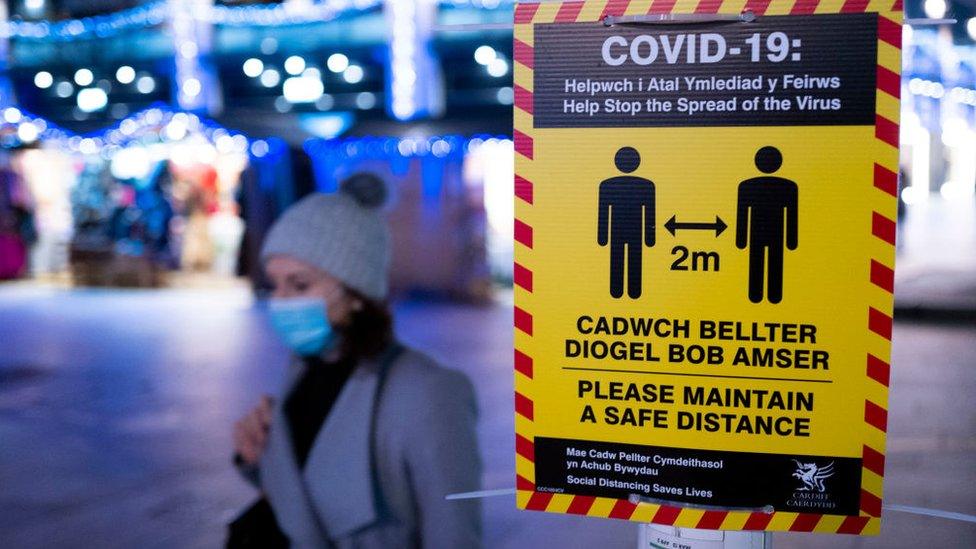
First Minister Mark Drakeford called for people to limit the amount of socialising during Christmas 2021
Licensed premises also had to offer table service only during this period in Wales, face masks were mandatory and indoor events were limited to a maximum of 30 people.
In contrast England did not enforce such restrictions during that period.
The report says that the daily peak of new infections in Wales during this wave was lower than in England, and was delayed.
A spokesperson for the Welsh Conservatives said: "This is the Labour government's pandemic record, this is what matters most to people, and this is what should be scrutinised in the Wales-specific Covid inquiry that Mark Drakeford is running scared from.
"If only the TAC group had done more to enable operations during the pandemic and prepare for recovery rather than coming out and celebrating a lower infection rate, maybe the NHS would be in a far better position than it currently is."

FIGHT FOR YOUR RIGHTS: The Welsh consumer show fighting for YOUR rights

- Published5 October 2022

- Published7 January 2022

- Published26 January 2022
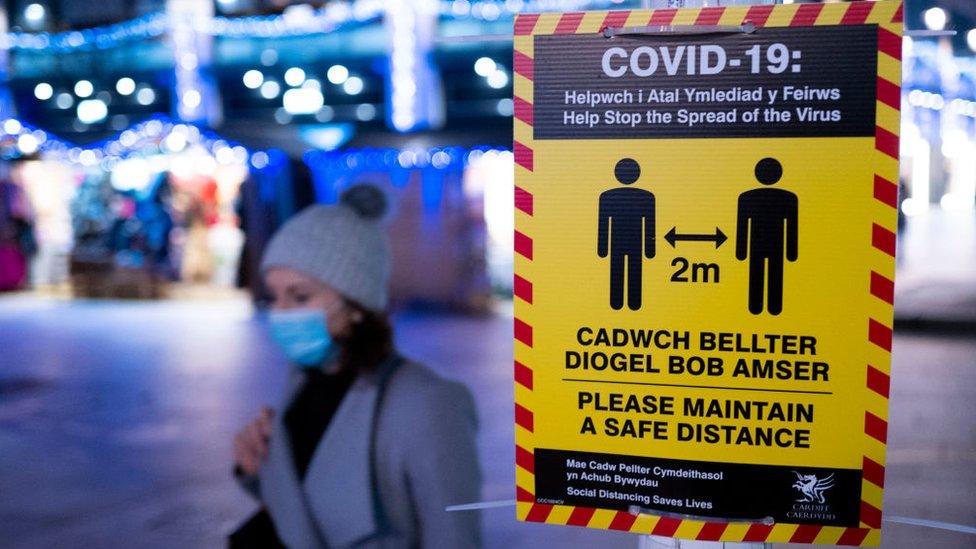
- Published19 August 2022
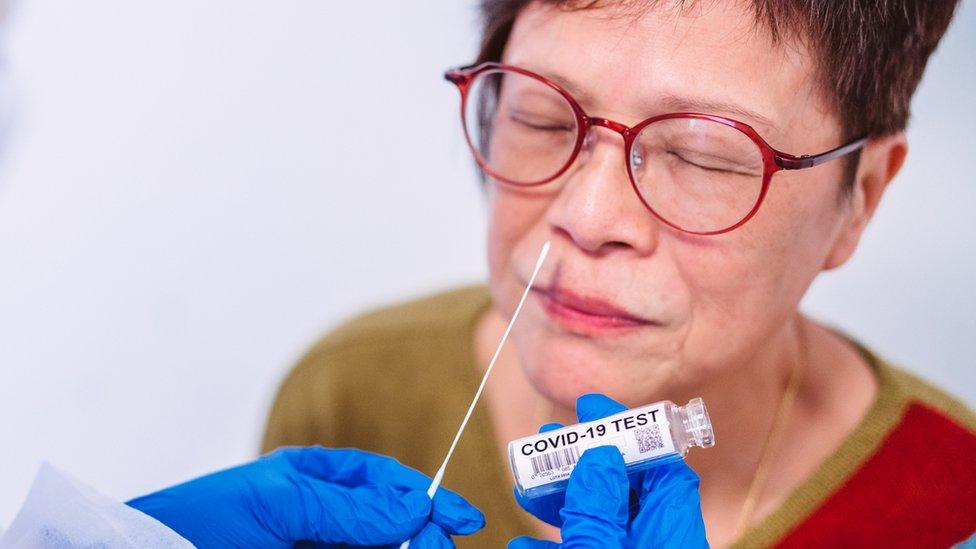
- Published4 October 2022

- Published11 December 2020
